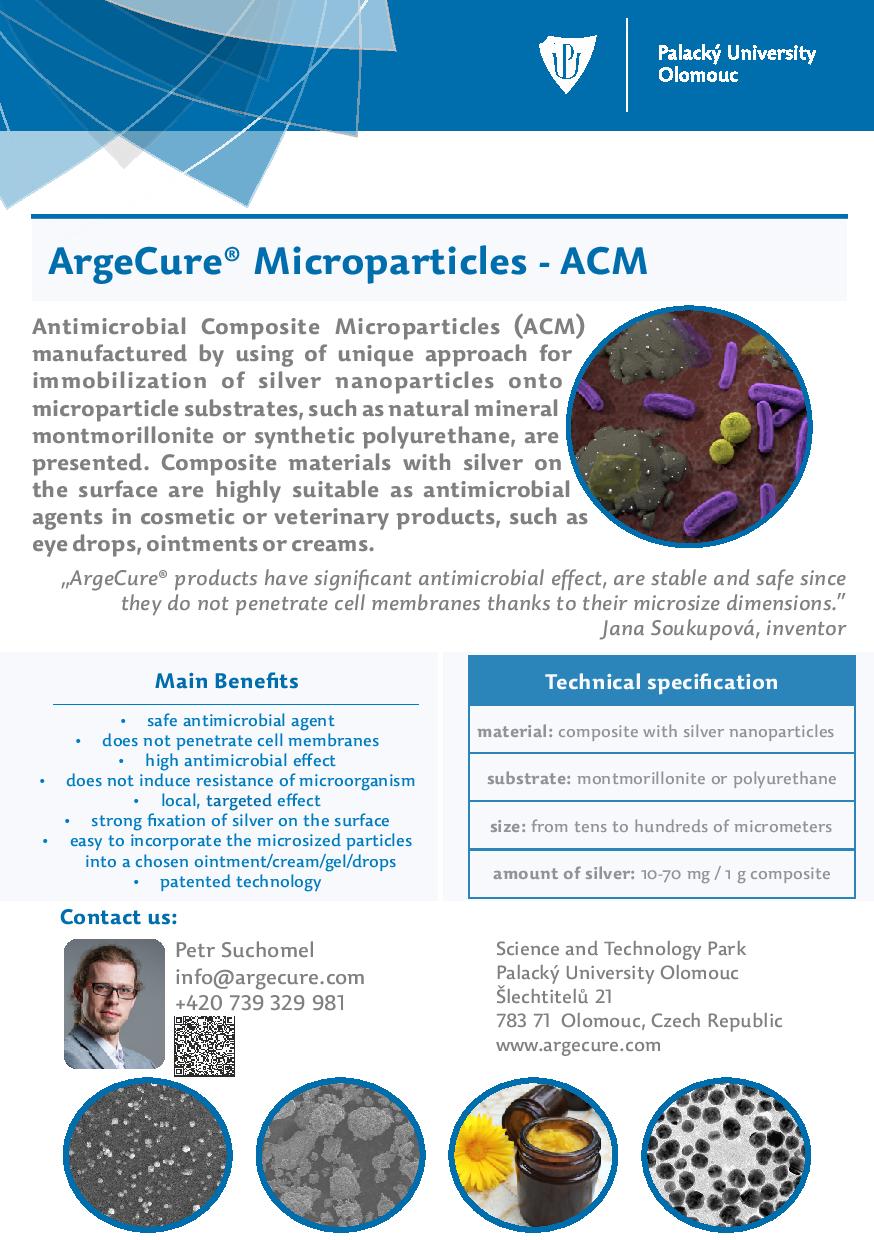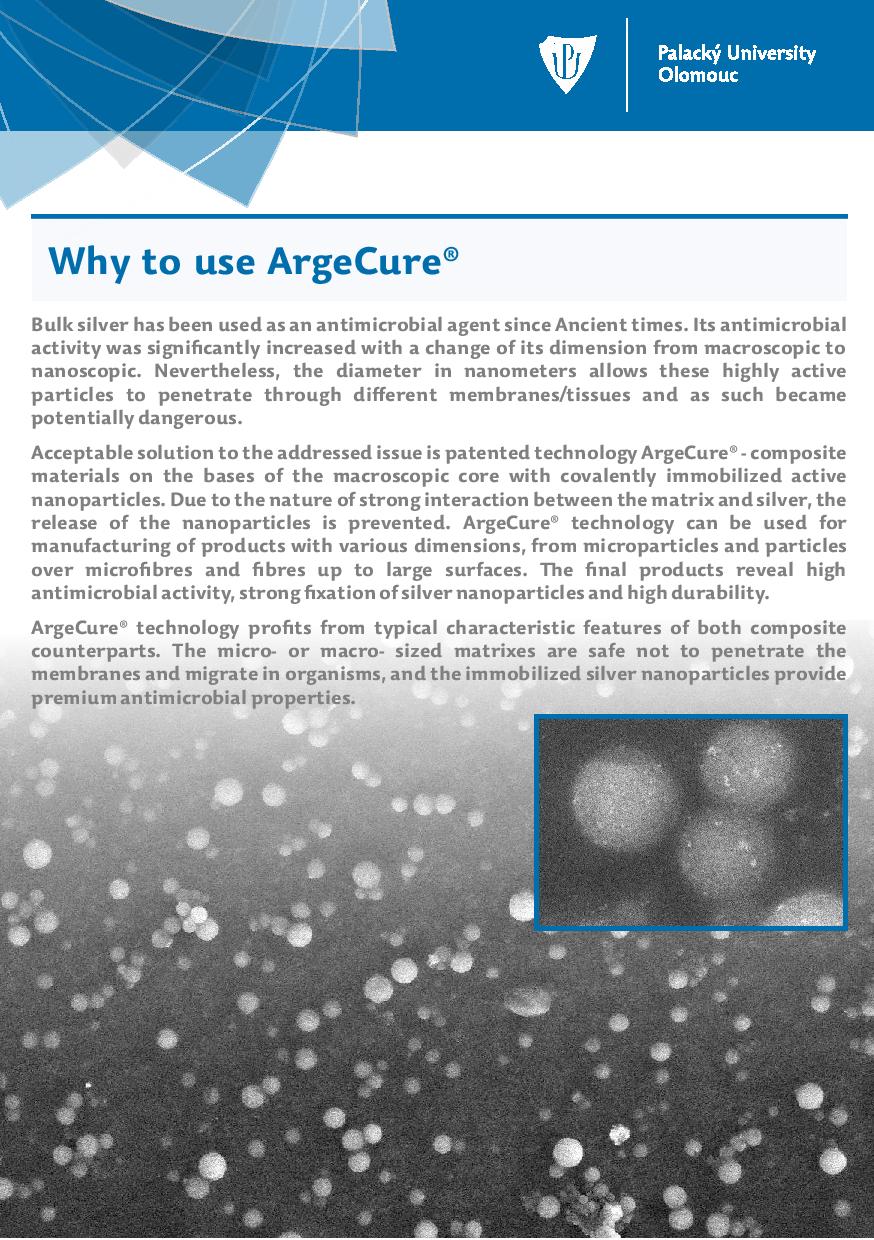SilverBeats by ArgeCure
INTRODUCTION:
Antimicrobial properties of silver have been known for centuries. It has been proved that silver is effective against various bacteria and fungi and in its insoluble zermetal form it naturally occurs in our environment. Moreover, the bacterial resistence has not been proved yet. Silver is commonly used in jewellery industry and even in long-term contact with skin poses minimal risk for majority of population. The need for antibacterial features, natural origin, rare allergies, wide scale effects and possibly no bacteria resistance favours its use in many fields. In the field of cosmetics, this can be used for prolonging expiration of cosmetic products, saving preservatives and having positive effect in final formulation against large variety of dermatitis caused by bacteria and fungi.
TECHNOLOGY (INVENTION) DESCRIPTION:
The invention enables a preparation of composite materials conveying positive effects of zero-valent silver with enormous surface area but not using potentially dangerous nanoparticles . Therefore, minimal amounts are needed, which results in material savings and therefore reduction of the costs although the desired effect is guaranteed. The silver, in a form of nanoparticles, is covalently bonded to micro particles, which prevents nanoparticles release to the site of application or to the environment. The invention protects the method of preparing/manufacturing the material with covalently bonded silver.
ADVANTAGES OVER EXISTING SOLUTIONS:
Antibacterial effects of silver can be achieved using either large quantities of metal form of silver in its macroscopic state or using relatively small amount of dangerous nanoparticles/ionic silver. Silver ions or nanoparticles pass through skin/membranes and can be accumulated in inner organs, especially in liver. The technology offers preparation and usage of a composite material, where silver nanoparticles are bonded to large and inert carrier particles and this way to profit from the safety of large and inert carrier particles, which cannot penetrate a skin barrier. It can be used as a preservative in the cosmetics or have a positive dermatic effect.
DEVELOPMENT STATUS (STAGE):
three-step manufacturing process; completed toxicological test (SZÚ/NHI approved)
PUBLICATIONS:
1. Paril, P et al. Antifungal effects of copper and silver nanoparticles against white and brown-rot fungi. Journal of Material Science. 52 (2017) 2720-2729. 2. Veverkova L. et al. Accurate determination of silver nanoparticles in animal tissues by inductively coupled plasma mass spectrometry. SPECTROCHIMICA ACTA PART B-ATOMIC SPECTROSCOPY. 102 (2014) 7-11. 3. Sitt, A et al. Microscale Rockets and Picoliter Containers Engineered from Electrospun Polymeric Microtubes. SMALL. 12 (2016) 1432-1439. - technology completely described in granted patents
IP PROTECTION STATUS:
Granted patent CZ303502 + EP + US; Granted patent CZ201638 + EP; Future patent for the manufacturing process
TECHNOLOGY / IP OWNERS :
All patens are owned by Palacky University Olomouc. Licence negotiation for the composite particles commercialization started by a start-up company.


More information
More information is available upon signing a CDA / NDA (Confidential Disclosure Agreement / Non-Disclosure Agreement)